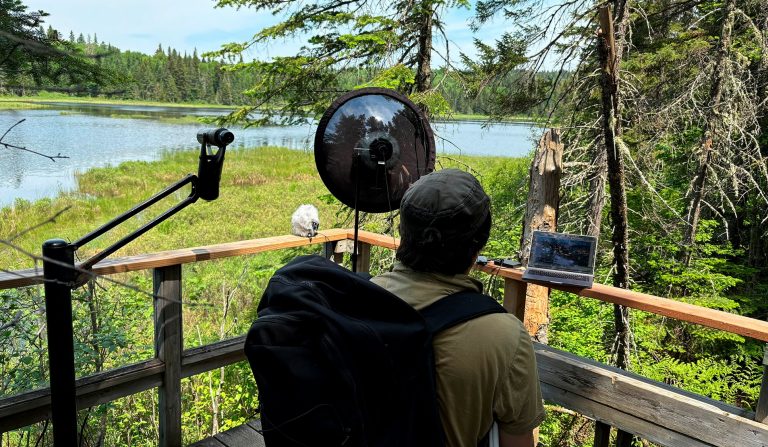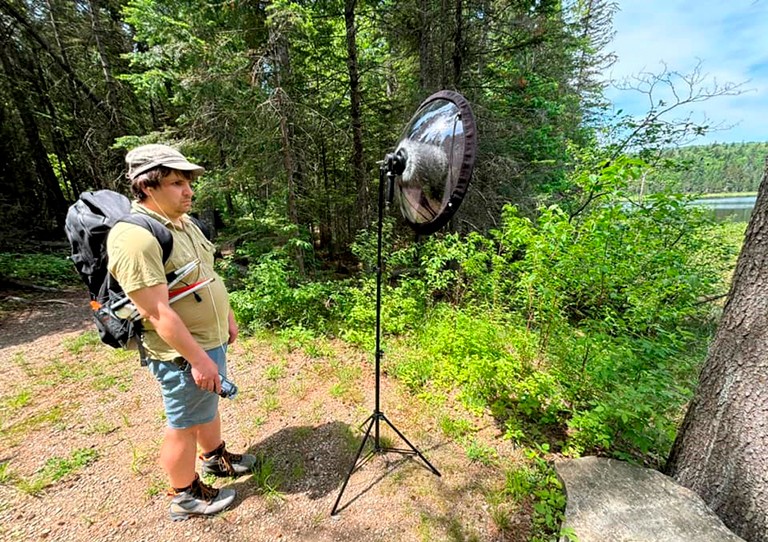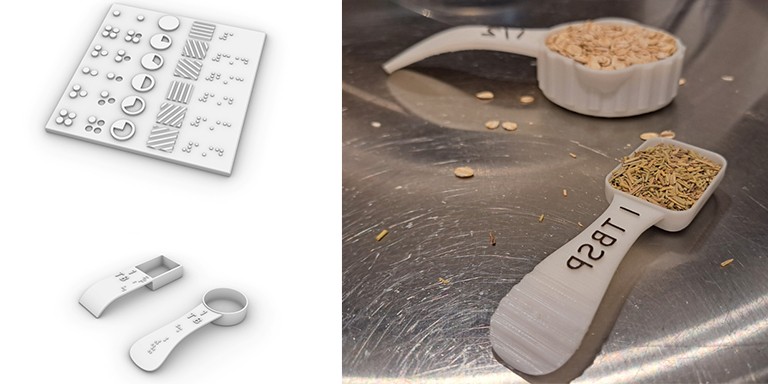Concordia students create adaptive design projects in collaboration with people with disabilities

Students in Florian Grond’s Inclusive and Accessible Design (DCART 498) course recently had the chance to develop a variety of user interface/user experience (UI/UX) projects and solutions for people with disabilities.
The design studio class integrates participatory and co-design methodologies to support a collaborative framework with clients and ensure valuable experiential learning for students in Concordia’s Department of Design and Computation Arts.
Grond, assistant professor of design and computation arts, developed partnerships with external clients to benefit both parties by providing the students with real-world experience and the partners with useful products and software designed according to their needs and lived experiences. The teams, each assembled to represent complementary design skills, had the opportunity to critically examine mainstream UI/UX and fill the gaps.
Anastasia Statsenko, Alexander McKinnon and Mollika Chakraborty collaborated on an accessible backpack design for recording equipment, as well as a user-friendly web platform, for Vytautas Bucionis Jr., a contemporary multi-stylistic composer and soundscape recordist.
 Vytautas Bucionis Jr.: “The results are nothing short of magic.”
Vytautas Bucionis Jr.: “The results are nothing short of magic.”
Bucionis, who is blind, praised the group for their excellent work as, until now, he had faced many obstacles while transporting his equipment and trying to promote his art online.
“The results are nothing short of magic. The backpack designed by Anastasia was the fruit of stunning resourcefulness, creativity, inspiration, commitment to quality and durability and meticulous research,” Bucionis says.
“It is the finest example of making one’s issues and lurking dangers evaporate in front of one’s eyes,” he adds.
“Similarly, Alexander and Mollika are releasing a web platform for me that is accessible to maintain for a blind person. I have rarely felt the kind of ecstasy from things being so easy, smooth and free of clutter as I did when I saw this new platform.”
‘A truly remarkable team’
Another team of students collaborated with Les Grands Ballets Canadiens de Montréal’s National Centre for Dance Therapy (NCDT). Students Maude Garneau, Mariam Aoune, Daniel Andrade and Jessica Dzandu designed access and pedagogical guides for the organization.
Though further development of the design is not currently feasible due to the NCDT’s imminent website migration, the prototype projects did not fail to dazzle.
“We are truly impressed by the quality of work demonstrated,” says Émilie Barrette, the NCDT’s acting manager of dance therapy. “The research was thoughtful, the observations were insightful and the prototype model they created is truly outstanding. It was a truly remarkable team.”
Other exemplary projects included an Access Centre for Students with Disabilities (ACSD) Loyola Campus access map for advisor Russ Cooper by Jonathan Jimenez and Rim Fekhar. Mary Dedes and Virginie LaBerge designed accessible kitchen measurement cups for Josée Boyer from Le Regroupement des aveugles et amblyopes de Montréal métropolitain (RAAMM).
Ines Pioselli and Sara Graveline made an app to read bedtime stories to children for blind and low-vision parents for theatre director Audrey-Anne Bouchard.
Hannah Kim and Dhruviu Dachmeda designed an accessible website for Montreal theatre group Théâtre Déchaînés, which puts on productions for audiences with special needs, such as sensory or mobility restrictions. And Jiahao Wu collaborated with deaf dancer Cai Glover.
“Coming into Professor Grond’s UX course, we were expecting to learn about digital UX. To our surprise, we were given the opportunity to explore UX within our specific practice, which in our case is more centred around analog objects, and also to work with real clients,” LaBerge says.
“Professor Grond sought to make us reflect on our role as designers working with a marginalized community and how to create something we are proud of while still centring the needs of others in every step of design.”
 Left: A texture board and variations created to test concepts. Right: The custom-designed cup and spoon.
Left: A texture board and variations created to test concepts. Right: The custom-designed cup and spoon.
‘Adaptive design is compassionate design’
Dedes and LaBerge’s measuring cups and spoons were custom designed for Boyer to address the specific needs posed by her visual impairment and for many other RAAMM community members. The team took into consideration adaptive design principles based on touch, such as the use of textures, tactile graphics and contrast, and created a texture system to haptically illustrate the measurements alongside the use of both embossed numbers and Braille.
Since those who are blind or visually impaired often have differing haptic reading preferences, a variety of styles allows for a personalized and more efficient identification. Dedes and Laberge also designed the cups to feature the textures on the cup rather than the handle to quickly differentiate them from the spoons.
“As people who are sighted, working for people who are blind and visually impaired encouraged us to constantly think of our user, work closely with our clients and make us more adaptable to others’ needs,” LaBerge says. “Our project, which is still ongoing, feels like it matters. We design to make ourselves happy, but this course reminded us that, as designers, we work to make other people’s lives easier.”
According to Dedes, the field of adaptive design is both deeply important and often not developed enough.
“It’s thankfully gaining more traction as technology enhances and awareness about the need for inclusivity in design spreads,” she says.
The pair say that through their rewarding work with Boyer and the RAAMM community they were able to both enrich their studies and push the boundaries of the limited ways of thinking that often come with the privilege of being able-bodied or sighted.
“We learned so much about Montreal’s blind and visually impaired communities. And we gained a deep understanding of the importance of implementing universal design practices within our current infrastructures and social systems,” Dedes adds.
“Nothing brought us greater joy than seeing the smiles on Josée and her colleagues’ faces as they tested our prototypes. Adaptive design is compassionate design and that is something we are incredibly proud to be a part of.”
Find out more about Concordia’s Department of Design and Computation Arts.


